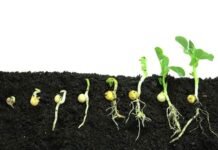Leading research institutes have called for the remaining global rock phosphate resources to be fairly distributed, especially in Africa where countries have historically have had little access to mineral phosphorus fertilisers.
The National Research Institute for Agriculture, Food and Environment and Bordeaux Sciences Agro said farmers’ global use of mineral phosphorus fertilisers has greatly increased soil phosphorus fertility and, consequently, crop yields.
However, these fertilisers are made from rock phosphate, a non-renewable resource that is patchily distributed across the Earth, and African countries have had little access to it.
“In contrast, African countries have historically had little access to mineral phosphorus fertilisers even though their soils are often highly deficient in phosphorus, which limits food and agricultural production. Remaining rock phosphate resources must be fairly distributed, prioritizing countries with the greatest need so as to promote global food security,” it said.
“Plants need phosphorus to grow. Researchers at INRAE and Bordeaux Sciences Agro have modeled, for each country, the fraction of soil-available phosphorous that is derived from the use of mineral phosphorus fertiliser. However, this global data hides dramatic differences among regions.”
According to the researchers, phosphorus occurs naturally in soils, but its levels and relative availability vary by global region and soil type.
“Since the 1950s, the use of mineral phosphorus fertilisers has boosted soil-available phosphorus and, thus, agricultural yields. However, these fertilisers are created via the mining and chemical processing of rock phosphate, a non-renewable natural resource that is unevenly distributed across the globe.
“For example, 70% of rock phosphate is in Morocco, while there is almost none to be found in Europe. Furthermore, the transformation of rock phosphate releases large amounts of pollution.”
Researchers agreed that, at current rates of extraction, the world will likely reach peak phosphorus by 2050.
“Such will probably lead to an increase in fertiliser prices and greater geopolitical tensions. Against this backdrop, it is essential to clarify how past and present patterns of mineral phosphorus fertiliser usage have affected the dependence of current agricultural systems on this finite resource.”
The scientists have since developed a model to simulate country-specific patterns of soil-available phosphorus in agricultural systems worldwide.
“This approach utilised data on stocks of soil-available phosphorus, crop yields, mineral fertiliser use, livestock numbers, and international trade. The calculations were based on a country’s average agricultural soil, which was defined by each country’s use of grasslands and crops within agricultural systems with varying levels of intensification.”
Reports show that mineral phosphorus fertilisers have boosted agricultural yields and promoted food security in numerous countries.
“Unfortunately, they are derived from non-renewable supplies of rock phosphate. In addition, rock phosphate mining and processing causes environmental harm. Certain countries, such as France, have accumulated large quantities of soil-available phosphorus,” the researchers noted.
“They must now strive to greatly temper their use of mineral phosphorus fertilisers. The reality is that yields will not necessarily suffer from the absence of fertilisers because crops can draw upon stocks of soil-available phosphorus, depending on soil type. Notably, within crop rotations, species such as white lupin or buckwheat can release phosphorus that is chemically bound to the soil, increasing its availability for other crops.
“Furthermore, these countries must urgently work to preserve the soil phosphorus fertility they have acquired. Notably, they can limit soil erosion, by using cover crops or reincorporating hedgerows into agricultural landscapes, and improve the recycling of organic matter, including livestock effluent and sludge from sewage treatment plants.”









